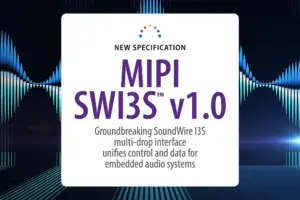Development Tools for Embedded Vision
ENCOMPASSING MOST OF THE STANDARD ARSENAL USED FOR DEVELOPING REAL-TIME EMBEDDED PROCESSOR SYSTEMS
The software tools (compilers, debuggers, operating systems, libraries, etc.) encompass most of the standard arsenal used for developing real-time embedded processor systems, while adding in specialized vision libraries and possibly vendor-specific development tools for software development. On the hardware side, the requirements will depend on the application space, since the designer may need equipment for monitoring and testing real-time video data. Most of these hardware development tools are already used for other types of video system design.
Both general-purpose and vender-specific tools
Many vendors of vision devices use integrated CPUs that are based on the same instruction set (ARM, x86, etc), allowing a common set of development tools for software development. However, even though the base instruction set is the same, each CPU vendor integrates a different set of peripherals that have unique software interface requirements. In addition, most vendors accelerate the CPU with specialized computing devices (GPUs, DSPs, FPGAs, etc.) This extended CPU programming model requires a customized version of standard development tools. Most CPU vendors develop their own optimized software tool chain, while also working with 3rd-party software tool suppliers to make sure that the CPU components are broadly supported.
Heterogeneous software development in an integrated development environment
Since vision applications often require a mix of processing architectures, the development tools become more complicated and must handle multiple instruction sets and additional system debugging challenges. Most vendors provide a suite of tools that integrate development tasks into a single interface for the developer, simplifying software development and testing.

Nota AI Signs Technology Collaboration Agreement with Samsung Electronics for Exynos AI Optimization “Driving the Popularization of On-Device Generative AI”
Nota AI’s optimization technology integrated into Samsung Electronics’ Exynos AI Studio, enhancing efficiency in on-device AI model development Seoul, South Korea Nov.26, 2025 — Nota AI, a company specializing in AI model compression and optimization, announced today that it has signed a collaboration agreement with Samsung Electronics’ System LSI Business to provide its AI

Google Announces LiteRT Qualcomm AI Engine Direct Accelerator
Google has announced a new LiteRT Qualcomm AI Engine Direct Accelerator, giving Android and embedded developers a much more direct path to Qualcomm NPUs for on-device AI and vision workloads. Built on top of Qualcomm’s AI Engine Direct (“QNN”) SDK, the new accelerator replaces the older TensorFlow Lite QNN delegate and plugs directly into LiteRT,

Small Models, Big Heat — Conquering Korean ASR with Low-bit Whisper
This blog post was originally published at ENERZAi’ website. It is reprinted here with the permission of ENERZAi. Today, we’ll share results where we re-trained the original Whisper for optimal Korean ASR(Automatic Speech Recognition), applied Post-Training Quantization (PTQ), and provided a richer Pareto analysis so customers with different constraints and requirements can pick exactly what

Cadence Adds 10 New VIP to Strengthen Verification IP Portfolio for AI Designs
This article was originally published at Cadence’s website. It is reprinted here with the permission of Cadence. Cadence has unveiled 10 Verification IP (VIP) for key emerging interfaces tuned for AI-based designs, including Ultra Accelerator Link (UALink), Ultra Ethernet (UEC), LPDDR6, UCIe 3.0, AMBA CHI-H, Embedded USB v2 (eUSB2), and UniPro 3.0. These new VIP will

SAM3: A New Era for Open‑Vocabulary Segmentation and Edge AI
Quality training data – especially segmented visual data – is a cornerstone of building robust vision models. Meta’s recently announced Segment Anything Model 3 (SAM3) arrives as a potential game-changer in this domain. SAM3 is a unified model that can detect, segment, and even track objects in images and videos using both text and visual

Introducing Gimlet Labs: AI Infrastructure for the Agentic Era
This blog post was originally published at Gimlet Labs’ website. It is reprinted here with the permission of Gimlet Labs. We’re excited to finally share what we’ve been building at Gimlet Labs. Our mission is to make AI workloads 10X more efficient by expanding the pool of usable compute and improving how it’s orchestrated. Over the

Au-Zone Technologies Expands EdgeFirst Studio Access
Proven MLOps Platform for Spatial Perception at the Edge Now Available CALGARY, AB – November 19, 2025 – Au-Zone Technologies today expands general access to EdgeFirst Studio™, the enterprise MLOps platform purpose-built for Spatial Perception at the Edge for machines and robotic systems operating in dynamic and uncertain environments. After six months of successful

Reimagining Embedded Audio: MIPI SWI3S Is a Game Changer
This blog post was originally published at MIPI Alliance’s website. It is reprinted here with the permission of MIPI Alliance. As embedded audio systems continue to evolve across consumer electronics, automotive and industrial applications, so does the demand to deliver advanced features—such as far-field voice recognition, spatial audio and “always-on” AI-driven audio processing—within increasingly compact, power-sensitive devices

